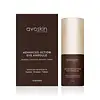What's inside
What's inside
 Key Ingredients
Key Ingredients

 Benefits
Benefits

 Concerns
Concerns

No concerns
 Ingredients Side-by-side
Ingredients Side-by-side

Water
Skin ConditioningButylene Glycol
HumectantPullulan
Niacinamide
SmoothingPropanediol
SolventSodium Polyacrylate
Absorbent1,2-Hexanediol
Skin ConditioningCaprylhydroxamic Acid
Cucumis Sativus Fruit Extract
EmollientLactobacillus Ferment Lysate
Skin ConditioningCamellia Sinensis Leaf Extract
AntimicrobialPunica Granatum Extract
AstringentCaprylyl Glycol
EmollientSodium Hydroxide
BufferingLactobacillus Ferment
Skin ConditioningAcetyl Tetrapeptide-5
HumectantCaffeine
Skin ConditioningAcetyl Hexapeptide-8
HumectantWater, Butylene Glycol, Pullulan, Niacinamide, Propanediol, Sodium Polyacrylate, 1,2-Hexanediol, Caprylhydroxamic Acid, Cucumis Sativus Fruit Extract, Lactobacillus Ferment Lysate, Camellia Sinensis Leaf Extract, Punica Granatum Extract, Caprylyl Glycol, Sodium Hydroxide, Lactobacillus Ferment, Acetyl Tetrapeptide-5, Caffeine, Acetyl Hexapeptide-8
Water
Skin ConditioningButylene Glycol
HumectantGlycerin
HumectantCyclopentasiloxane
EmollientSqualane
EmollientNiacinamide
SmoothingCetearyl Alcohol
EmollientAmmonium Acryloyldimethyltaurate/Vp Copolymer
Lactobacillus/Rice Ferment
Skin ConditioningPolyglyceryl-6 Distearate
Emulsifying1,2-Hexanediol
Skin ConditioningHydroxyacetophenone
AntioxidantCetearyl Stearate
Skin ConditioningLecithin
EmollientSodium Hyaluronate
HumectantCaffeine
Skin ConditioningCyclodextrin
AbsorbentCollagen
MoisturisingAllantoin
Skin ConditioningPolyglyceryl-3 Beeswax
EmulsifyingCetyl Alcohol
EmollientBeta-Glucan
Skin ConditioningEscin
TonicGlycyrrhiza Uralensis Root Extract
Skin ConditioningPolysorbate 20
EmulsifyingTrehalose
HumectantPropanediol
SolventPhenoxyethanol
PreservativeCentella Asiatica Root Extract
Skin ConditioningEthylhexylglycerin
Skin ConditioningCaprylyl Glycol
EmollientXanthan Gum
EmulsifyingPalmitoyl Tripeptide-1
Skin ConditioningArginine/Lysine Polypeptide
Skin ConditioningWater, Butylene Glycol, Glycerin, Cyclopentasiloxane, Squalane, Niacinamide, Cetearyl Alcohol, Ammonium Acryloyldimethyltaurate/Vp Copolymer, Lactobacillus/Rice Ferment, Polyglyceryl-6 Distearate, 1,2-Hexanediol, Hydroxyacetophenone, Cetearyl Stearate, Lecithin, Sodium Hyaluronate, Caffeine, Cyclodextrin, Collagen, Allantoin, Polyglyceryl-3 Beeswax, Cetyl Alcohol, Beta-Glucan, Escin, Glycyrrhiza Uralensis Root Extract, Polysorbate 20, Trehalose, Propanediol, Phenoxyethanol, Centella Asiatica Root Extract, Ethylhexylglycerin, Caprylyl Glycol, Xanthan Gum, Palmitoyl Tripeptide-1, Arginine/Lysine Polypeptide
 Reviews
Reviews

Ingredients Explained
These ingredients are found in both products.
Ingredients higher up in an ingredient list are typically present in a larger amount.
1,2-Hexanediol is a synthetic liquid and another multi-functional powerhouse.
It is a:
- Humectant, drawing moisture into the skin
- Emollient, helping to soften skin
- Solvent, dispersing and stabilizing formulas
- Preservative booster, enhancing the antimicrobial activity of other preservatives
Butylene Glycol (or BG) is used within cosmetic products for a few different reasons:
Overall, Butylene Glycol is a safe and well-rounded ingredient that works well with other ingredients.
Though this ingredient works well with most skin types, some people with sensitive skin may experience a reaction such as allergic rashes, closed comedones, or itchiness.
Learn more about Butylene GlycolCaffeine is most associated with coffee, tea, and cacao. In skincare, it helps with calming inflammation and is rich in antioxidants.
While caffeine is used to treat cellulite and and dark circles, further studies are needed to prove this. It has been believed to help with these skin conditions due to its ability to dilate blood vessels and increase blood flow.
Some studies are looking into caffeine's ability to protect against UV rays.
Learn more about CaffeineCaprylyl Glycol is a humectant and emollient, meaning it attracts and preserves moisture.
It is a common ingredient in many products, especially those designed to hydrate skin. The primary benefits are retaining moisture, skin softening, and promoting a healthy skin barrier.
Though Caprylyl Glycol is an alcohol derived from fatty acids, it is not the kind that can dry out skin.
This ingredient is also used as a preservative to extend the life of products. It has slight antimicrobial properties.
Learn more about Caprylyl GlycolNiacinamide is a multitasking form of vitamin B3 that strengthens the skin barrier, reduces pores and dark spots, regulates oil, and improves signs of aging.
And the best part? It's gentle and well-tolerated by most skin types, including sensitive and reactive skin.
You might have heard of "niacin flush", or the reddening of skin that causes itchiness. Niacinamide has not been found to cause this.
In very rare cases, some individuals may not be able to tolerate niacinamide at all or experience an allergic reaction to it.
If you are experiencing flaking, irritation, and dryness with this ingredient, be sure to double check all your products as this ingredient can be found in all categories of skincare.
When incorporating niacinamide into your routine, look out for concentration amounts. Typically, 5% niacinamide provides benefits such as fading dark spots. However, if you have sensitive skin, it is better to begin with a smaller concentration.
When you apply niacinamide to your skin, your body converts it into nicotinamide adenine dinucleotide (NAD). NAD is an essential coenzyme that is already found in your cells as "fuel" and powers countless biological processes.
In your skin, NAD helps repair cell damage, produce new healthy cells, support collagen production, strengthen the skin barrier, and fight environmental stressors (like UV and pollution).
Our natural NAD levels start to decline with age, leading to slower skin repair, visible aging, and a weaker skin barrier. By providing your skin niacinamide, you're recharging your skin's NAD levels. This leads to stronger, healthier, and younger looking skin.
Another name for vitamin B3 is nicotinamide. This vitamin is water-soluble and our bodies don't store it. We obtain Vitamin B3 from either food or skincare. Meat, fish, wheat, yeast, and leafy greens contain vitamin B3.
The type of niacinamide used in skincare is synthetically created.
Learn more about NiacinamidePropanediol is an all-star ingredient. It softens, hydrates, and smooths the skin.
It’s often used to:
Propanediol is not likely to cause sensitivity and considered safe to use. It is derived from corn or petroleum with a clear color and no scent.
Learn more about PropanediolWater. It's the most common cosmetic ingredient of all. You'll usually see it at the top of ingredient lists, meaning that it makes up the largest part of the product.
So why is it so popular? Water most often acts as a solvent - this means that it helps dissolve other ingredients into the formulation.
You'll also recognize water as that liquid we all need to stay alive. If you see this, drink a glass of water. Stay hydrated!
Learn more about Water